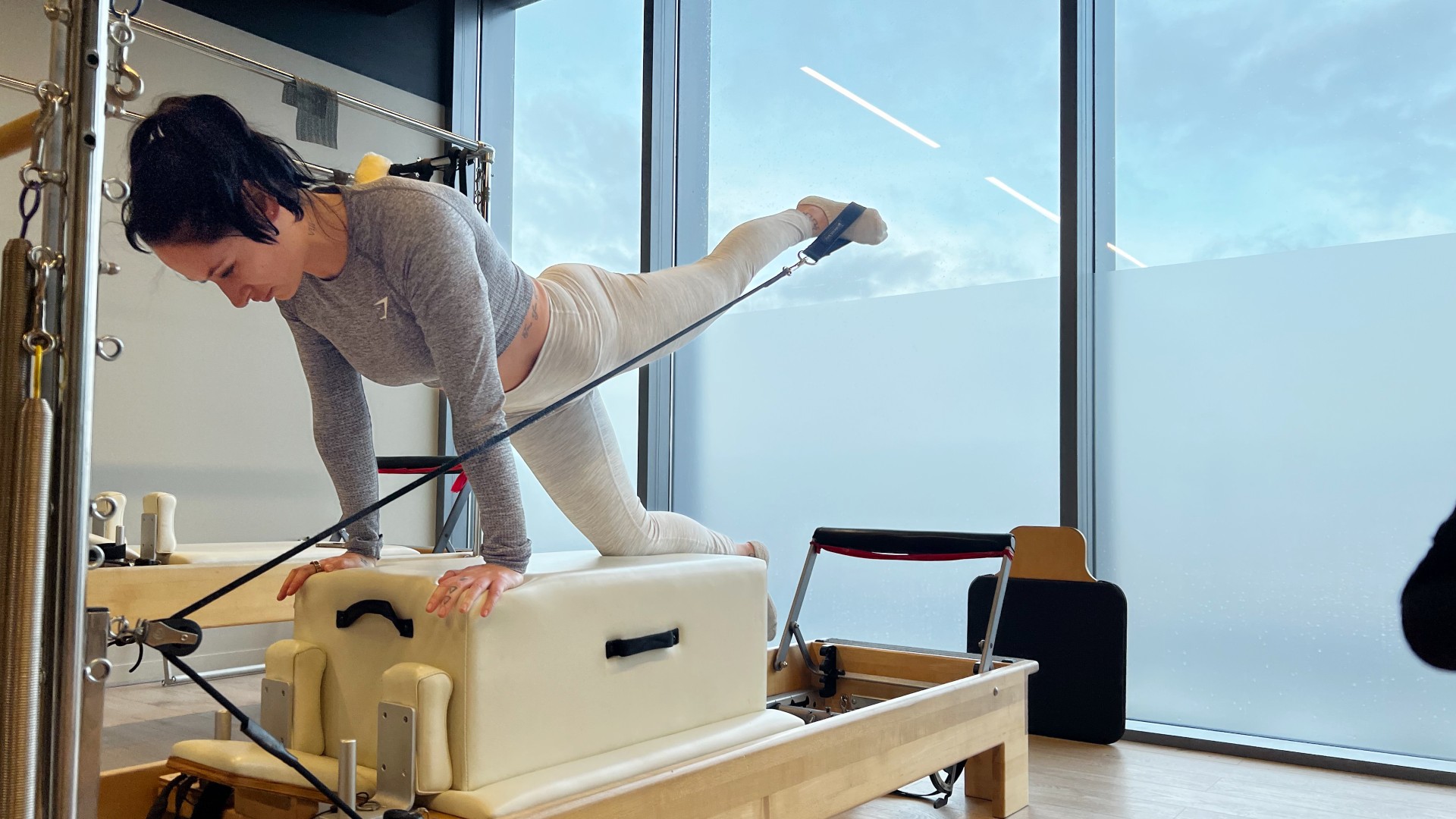
With so many trending TikTok workouts flooding social media daily, it’s hard to know which ones actually work. But a recent trend called the 3-2-1 method workout is the latest to cause a stir. And while it isn’t a workout per se, it promises to transform how you exercise using a simple trick.
The 3-2-1 method has stormed TikTok, with users hailing it as the ultimate workout split. According to said method, adopters will prioritize three strength training sessions, two Pilates classes, and one cardio session per week. Simple. Each workout could rotate to give your muscles time to recover, and you can even swap out sessions to better suit your exercise style — like three Pilates classes and two strength sessions instead, for example.
I mean, I’m relieved it’s not another fad workout claiming to ‘shred body fat fast’ or produce rippling abs to match Zac Efron, but I can’t deny I thought I’d missed something. Did I skip a paragraph by mistake? Apparently not, it’s really that simple, and it turns out I’ve been unknowingly doing the 3-2-1 method workout for months.
@nicolemwinter_ ♬ why r people using this - ana ✰
What is the 3-2-1 method workout?
It’s no relation to the 12-3-30 treadmill workout, and for this one, you don’t have to run backward, chant affirmations on a TikTok Hot Girl Walk, or strut along with the Taylor Swift treadmill workout either. Instead, factor three strength programs, two Pilates sessions, and one cardio class into your workout week.
You can switch these around (two cardio and one Pilates, for example), and rotate the workout types throughout the week. Some people are even replacing Pilates with low-impact yoga or stretching routines.
Benefits of the 3-2-1 method workout
The method provides a loose structure for anyone who struggles with exercise consistency or programming for progression. By dividing up your workouts this way and sticking to a set routine, you could get progressively stronger, build muscle, improve endurance, increase your heart rate, and develop balance, coordination, and flexibility.
Within the method, you can split your strength sessions however you want. Some users are dividing this into an upper-body, lower-body, and full-body split, which allows your muscles ample time to recover between. Others favor three days of full-body workouts, targeting muscle groups multiple times a week — a key ingredient for hypertrophy, the muscle-building process.
Sign up to get the BEST of Tom's Guide direct to your inbox.
Get instant access to breaking news, the hottest reviews, great deals and helpful tips.
Pilates could be subbed for yoga or a similar low-impact recovery session, and cardio could include any HIIT class, run, or activity that will ramp up your heart rate. There’s plenty of room for interpretation. If you love Pilates — mat, Reformer, or both are approved.

Consistent strength program training is the best way to build strength and lean muscle, and current WHO guidelines suggest engaging in muscle-strengthening resistance activities at least twice per week. It also encourages moderate aerobic activity of 150-300 minutes or 75-150 minutes of vigorous-intensity activity, which could include walking, running, or an exercise class. And research shows that regular Pilates is renowned for improving your body’s overall mobility, balance, and core strength.
How to do the 3-2-1 method workout
First, decide the split that suits you most, aiming to keep it as close as possible to the original method where you can and sticking to 3-2-1, regardless of any swaps you make. Remember that although you are rotating between Pilates, cardio, and strength training, you’ll need to factor in rest and recovery — although Pilates could also count as active recovery if you exercise regularly.
Try spreading your strength days across the week and adding Pilates and cardio between them to break things up. For example, your week could look like this:
- Monday- Strength
- Tuesday- Pilates
- Wednesday- Strength
- Thursday- Pilates
- Friday- Strength
- Saturday- Rest
- Sunday- Cardio
During strength training, check off the major muscle groups, including your chest, back, shoulders, arms, glutes, and leg muscles. You could access various classes on YouTube — we’ve got a bank of the best Tabata workouts on YouTube here — and the best workout apps for all types of fitness, or go to classes at your local gym. An hour's cardio class won’t hit the recommended amount of aerobic activity per week, but you could top this up with outdoor activities like walks and walking workouts.
Is the 3-2-1 method workout worth trying?
The 3-2-1 method workout provides an exercise blueprint suitable for everyone to scale based on their fitness journey. But given this much room to pivot and the “anything goes” mentality, I’m wondering what the USP of the 3-2-1 is at all. Unless I’m missing something, this is how many people have been training for a long time, mixing strength, cardio, and recovery activity into a weekly routine. And yes, it’s what I would recommend to clients (and what I do myself), but it’s not groundbreaking.
I’m glad the 3-2-1 method workout has combined these training concepts into a TikTok-friendly package that reaches more people. I'm also glad it provides more structure and consistency. But you’ll still need to choose and evolve the workouts yourself, decide your sets and reps, and modify them as you go.
For inspiration, especially if you’re new to exercise, I recommend these full-body strength exercises and the 5 best kettlebell exercises for beginners to build muscle and strength. For cardio workouts, these are 5 cardio exercises that burn more calories than running, and to upskill your Pilates routine, check out the 8 best Pilates exercises that target your core.
Verdict
By sticking to a 3-2-1 workout method consistently, you should be able to build strength and lean muscle mass, improve overall mobility and core strength, and even increase cardio fitness. This could translate into weight loss and better muscle definition in some people, alongside managing diet. But remember, adapt your programs as your body adapts to any given activity.
During exercise (especially strength training), your muscle fibers micro-tear, and rest helps them to repair, recover, and grow. Try to target alternating muscle groups throughout the week to avoid over-training for this reason.
More from Tom's Guide

Sam Hopes is a level 3 qualified trainer, a level 2 Reiki practitioner and fitness editor at Tom's Guide. She is also currently undertaking her Yoga For Athletes training course.
Sam has written for various fitness brands and websites over the years and has experience across brands at Future, such as Live Science, Fit&Well, Coach, and T3.
Having coached at fitness studios like F45 and Virgin Active and personal trained, Sam now primarily teaches outdoor bootcamps, bodyweight, calisthenics and kettlebells.
She also coaches mobility and flexibility classes several times a week and believes that true strength comes from a holistic approach to training your body.
Sam has completed two mixed doubles Hyrox competitions in London and the Netherlands and finished her first doubles attempt in 1:11.
